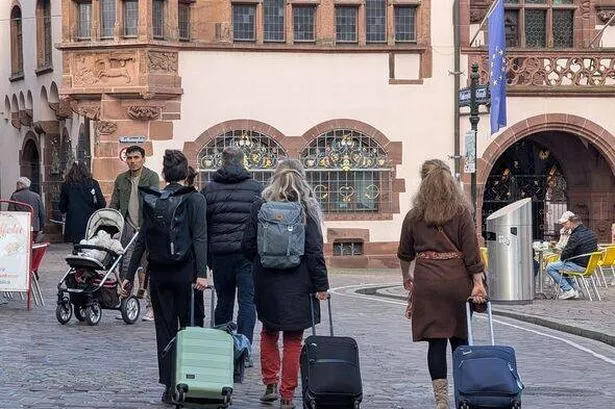Pickpocketing is a major issue in popular tourist cities such as Barcelona, but it’s not Spain that tops the list as the prime location for this slick-fingered crime
While Barcelona is infamous for its high levels of pickpocketing, it’s not Spain that takes the crown as the prime hotspot for this nimble-fingered crime. Despite pickpocketing being a major issue – particularly for tourists – in Barcelona, the problem is rampant across Europe and beyond, with one European holiday destination dubbed the “worst” for light-fingered theft.
In tourist-heavy areas, holidaymakers must be extra vigilant with their belongings, especially in airports, train stations, underground systems, hotel lobbies or even while strolling down certain streets. UK travel insurance firm Quotezone.co.uk revealed last year that it had pinpointed where travellers were most likely to fall prey to pickpockets, singling out a location visited by 3.5 million Brits each year.
Tourists have corroborated the research with reviews on one particular visitor hotspot warning of “a lot of pickpockets in the area”. Data gathered by Quotezone showed that Italy was the prime spot where tourists are likely to be separated from their possessions by nimble-fingered thieves.
Rome’s iconic Trevi Fountain has been flagged as a hotbed for pickpocketing, with the landmark boasting over 100,000 reviews – and hundreds of mentions of “pickpockets” on TripAdvisor, reports the Express.
As a site that becomes packed from spring through to summer, visitors are cautioned to “be careful” at this “beautiful” Roman landmark.
One disgruntled holidaymaker took to TripAdvisor to vent: “You have to elbow your way to the front of the fountain. Many people gather in front and sit for hours, so sitting is almost impossible.
“We didn’t spend more than 15 minutes. Be aware of pick pockets, as you are body to body in front and around the fountain.”
Another tourist, also reviewing on TripAdvisor, described a “beautiful fountain” but warned that the area was “extremely crowded”, cautioning others to “beware of this area” due to “lots of scams and pick pockets”.
According to research by Quotezone, Italy tops the list as the prime hotspot for pickpockets, closely followed by France, with the Eiffel Tower in Paris being particularly notorious.
Currently, Google reviews of the Eiffel Tower reveal over 800 visitors citing pickpockets as a problem – and the area is swamped with tourists throughout the year.
One Google reviewer shared their experience, describing the Eiffel Tower as “enormous and breathtaking”, but they also issued a warning.
The visitor penned: “It’s a very popular place, so expect big crowds; people from all over the world gather here to admire the monument and take in the scenery.
“Because of that volume of visitors, be mindful of your belongings. Pickpockets operate in crowded tourist spots, and there are street hustles and game scammers who may try to distract you or pressure you into playing quick ‘games’ that aren’t fair.”
The reviewer added: “Keep bags zipped and close, avoid carrying valuables in easily accessible pockets, and politely decline invitations from anyone hawking games or insisting you join impromptu activities.”
Quotezone’s comprehensive European pickpocketing index has revealed Italy as the top spot, with France coming in second and Spain taking third place. These rankings are based on mentions of “pickpockets” or “stolen” per million visitors.
The researchers reached their conclusions by analysing the number of mentions of “pickpocketing” or “stolen” on traveller review websites for Europe’s top destinations, compared to the number of visitors to each country.
Greg Wilson, founder and CEO of Quotezone.co.uk, warned: “Theft can happen anywhere, and tourist hotspots are convenient places for criminals to target holidaymakers’ wallets and purses while they are busy taking in the sites.
“Many holidaymakers are unaware that some of the most popular destinations for Brits have some of the highest incidents of pickpocketing in Europe.
“Our research revealed some surprising results with Italy having the most pickpocketing mentions, yet France and Spain have much larger volumes of tourists.”
According to data from Quotezone, the “worst” European countries for pickpocketing are:
- Italy
- France
- Spain
- Germany
- Netherlands
- Portugal
- Turkey
- Greece
- Poland
- Republic of Ireland

